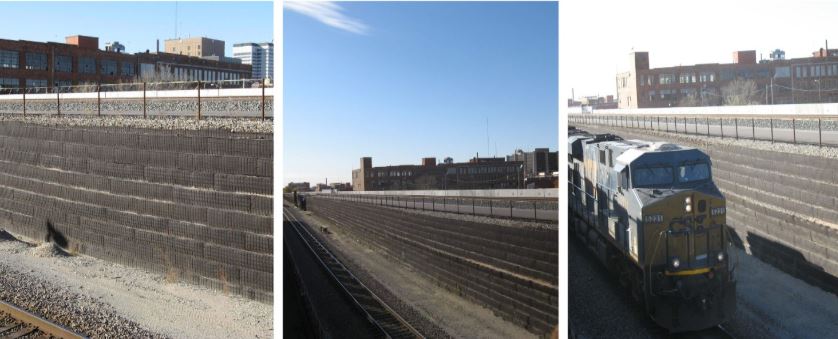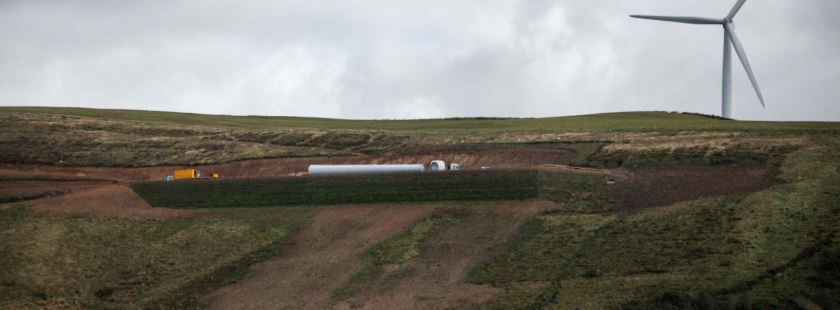What is load bearing capacity of soil?
Understanding soil’s load-bearing capacity is a critical aspect of structural design and construction. Historically, builders relied on experience and observation to construct structures. The science of understanding soil behaviour and capacity was unknown. With sheer observations and requirements to understand soil behaviour, scientists coined the term ‘load bearing capacity of soil’. Karl von Terzaghi, an Austrian civil engineer, pioneered the scientific theory of soil’s ultimate bearing capacity. A shallow foundation is one that transfers loads to the soil at a shallow depth. The rule of thumb that its depth is less than its width (Df ≤ B) is a common guideline, not a formal definition from Terzaghi’s theory. He also developed a method to determine the bearing capacity of soil through general shear failure cases.
In 1951, Karl Meyerhof significantly expanded on Terzaghi’s theory. Meyerhof’s work was a crucial advancement that introduced shape, depth, and inclination factors, making the bearing capacity equation applicable to a much wider variety of foundation shapes (e.g., square, circular) and loading conditions.
To appreciate its importance, we must first define soil’s load-bearing capacity. In this blog, you will be able to understand the depth of this concept.
Classification of load-bearing capacity of soil
The load-bearing capacity of soil refers to its ability to support applied loads, representing the maximum pressure it can sustain without failure when a foundation is laid. The load bearing capacity is further classified into 2 categories:
- Ultimate bearing capacity: Theoretically, it is the maximum pressure soil can support without collapsing in the absence of any safety measure.
- Allowable bearing capacity: It states the practical load bearing capacity of the soil. It can be calculated as:
Allowable bearing capacity = ultimate bearing capacity/safety factor. It states the soil’s acceptability to handle the weight without failure and with applied safety measures.
Factors influencing the load bearing capacity of soil
Every region has different soil with varying textures and load-bearing capacities. However, the factors that affect the load-bearing capacity of soil are consistent. This includes the following factors:
- Soil strength: The load-bearing capacity is influenced by the soil type, with cohesionless soils relying on friction angles to determine load distribution. This factor determines the ability of the cohesive soil to bear load. A dense cohesionless soil (like compact sand) can have a much higher bearing capacity than a soft cohesive soil (like soft clay).
- Foundation width: The width of foundations directly impacts the soil’s load-bearing capacity, particularly in cohesionless soil. In cohesionless soils, a wider foundation increases bearing capacity. The soil’s shear strength, which is determined by its internal friction angle, is a key parameter in this calculation. The load-bearing capacity of a cohesive soil (like clay) is directly dependent on its shear strength, which is represented by its cohesion.
- Foundation depth: A deeper foundation increases the bearing capacity in all soil types by engaging a larger and typically stronger soil mass due to increased overburden pressure.
- Spacing between foundation: For adjacent foundations on cohesionless soil, a spacing of approximately 1.5 times the foundation width is recommended to prevent overlapping stress zones and to maintain soil bearing capacity. For example, if the foundation width is 10 meters, the distance between adjacent foundations should be around 15 meters.
How to determine soil load capacity?
Before understanding the formula to derive load bearing capacity, let’s first understand the three main components:
- Ultimate bearing capacity: The ultimate bearing capacity, also known as (qu), is the maximum pressure the soil can bear.
Safe bearing capacity: This is denoted as (qs), the maximum amount of pressure soil can bear with all the safety factors considered.
Net bearing capacity: Net bearing capacity, also represented as (qn), is the difference between ultimate bearing capacity and overburden pressure.
Ultimate bearing capacity can be calculated using Terzghi’s theory and formula, for other shapes (square, circular), shape factors must be applied, which is as follows:
Where,
- qu: Ultimate bearing capacity
- C: Cohesion
- Nc, Nq, Nγ: Bearing Capacity Factors, depend on the angle of internal friction of soil
- Df: Foundation depth
- B: Foundation width
- γ: Unit weight of soil
Example Calculation (for a strip footing on clay):
Let’s analyze a footing on a firm cohesive soil (clay), where the friction angle (φ) is 0.
Given:
Cohesion (c) = 40 kN/m² (a firm clay)
Unit Weight (γ) = 18 kN/m³
Foundation Depth (D_f) = 1.2 m
Foundation Width (B) = 1.5 m
For φ = 0°, the bearing capacity factors are: N_c = 5.14, N_q = 1, N_γ = 0
Calculation:
qᵤ = (40 kN/m² * 5.14) + (18 kN/m³ * 1.2 m * 1) + (0.5 * 18 kN/m³ * 1.5 m * 0)
qᵤ = 205.6 + 21.6 + 0
qᵤ = 227.2 kN/m² (or 227.2 kPa)
This is the ultimate capacity. With a factor of safety of 3, the allowable bearing capacity (qₐ) would be 227.2 / 3 = 75.7 kPa.
Methods to test load bearing capacity of soil
Each soil type varies in composition, texture, density, and load-bearing capacity, requiring different established methods to suit each type, which are as follows:
- The plate bearing test: The plate bearing test is an in-situ test performed directly on the construction site. In this test, a certain amount of weight is imposed on the sample plates and the result induced is measured. This data is then used to derive load settlement curves, determining the bearing capacity.
Standard Penetration Test: The standard penetration test, Also known as SPT, is exceptionally helpful in cohesionless soils. In this test, the bearing capacity is determined by measuring the resistance of the soil.
Cone Penetration Test: The cone penetration test (CPT) uses cone-tipped equipment to measure soil resistance, differing from SPT in methodology. The primary difference is that the SPT is a dynamic test (driving a sampler with a hammer), while the CPT is a static test (pushing a cone at a constant rate).
- Pressuremeter Test: This is also an in-situ test like the plate-bearing test. It measures the deformability and strength of the soil by blowing an inflatable cylindrical tube inside the borewell. The changes in pressure and volume are recorded, and bearing capacity is calculated.
How to increase soil load capacity?
When soil’s bearing capacity is insufficient, specific techniques can be employed to enhance its bearing strength.
- Increase in the depth of the foundation: Increasing foundation dimensions is a simple and effective way to enhance load-bearing capacity. Although high moisture can complicate construction, increasing depth remains a valid method.
Soil drainage: Soil moisture content and load bearing capacity are inversely proportional to each other. The higher the moisture in the soil, the lesser the load bearing capacity. To overcome this challenge, engineers often use the technique of draining the soil moisture, excess water is drained out using pipes.
Soil compaction: Soil compaction increases density and strength by reducing the void space between particles, which in turn can reduce permeability.
- Soil confinement: This method is useful in shallow foundations. Soil confinement works by enclosing a volume of soil to prevent it from spreading laterally under load, which increases its vertical bearing capacity.
- Usage of geogrids: Geogrids are an effective technique to increase load bearing capacity due to its core functionality of tensile improvement.
How can you increase the load bearing capacity of soil?
The bearing capacity of the soil can be remarkably improved using highly efficient geosynthetic materials like geogrids. Here’s how:
- Geogrids enhance soil capacity by compensating for its low tensile strength and providing reinforcement.
- Geogrids enhance soil strength by providing tensile reinforcement through interlocking with soil particles, not by acting as protective shields.
It also gives excellent stability to the structure during seismic movements below the surface.
Strata Geosystems' role in strengthening soil load capacity
StrataGrid is a cutting-edge product made by interweaving high-tenacity polyester yarn. It has exceptional tensile strength and provides vertical and horizontal soil reinforcement. What stands out in this product is its UV-stabilized coating that ensures longevity and resistance against adverse weather conditions. With these remarkable features, StrataGrid is a successful soil reinforcement technology and provides exceptional load-bearing capacity to the soil.
- The tensile strength of soil is quite low. To improve and to provide extensive support to soil, engineers use geogrid.

Strata Geosystems took on the challenge of elevating a pair of side-by-side railroad tracks through a bustling downtown traffic corridor, collaborating with KS Union Pacific Railroad and Burlington Northern Santa Fe Railroad. Our team of experts found a way to significantly improve the load-bearing capacity of the soil, ensuring the structure could withstand heavy loads. Our experts proposed a solution of installing horizontal layers of StrataGrid at 18″ intervals (one layer per wire basket) all the way to the top of the wall. To further bolster the structural stability, the team backfilled the facing of temporary wire baskets with fine-grain sand and wrapped it in a blanket of microgrid face wrap. The project’s impact was substantial, resulting in the creation of new grade separations that connected five new bridges and one rehabilitated bridge along a 1.8-mile strip. This seamless integration allowed both trains and vehicles to flow unimpeded through eight major thoroughfares. Our commitment to excellence was evident in the extensive monitoring conducted over several months, which validated our solution. Even under heavy loads, the structure remained rock-solid, moving no more than half an inch in any direction, including vertical settlement.
- Strata Geosystems provided a reinforced earth solution for a steep slope platform on a mountain edge in Ireland, Western Europe, using StrataGrid uniaxial geogrid and StrataSlope systems.

Strata proposed an innovative and sustainable solution to build a working platform on the edge of a steep slope while minimizing the amount of fill material used. In the design calculations, we considered a surcharge of 45 kN/m² and a required bearing capacity of 200 kPa on the finished surface of the equipment used for constructing 75-meter-tall turbines. Our geosynthetics analysis determined that a combination of on-site granular material and StrataGrid 35 kN and 55 kN with 600mm spacing could make 10-meter-high, 70-degree angled walls feasible for the contractor. Our team of experts designed the reinforced soil wall following the guidelines of SD8006:2010 for internal stability and Eurocode EC7 for global stability. By introducing this reinforced earth solution for the steep slope, we significantly reduced the overall height of the structure from approximately 30 m to a more practical 10 m. This approach not only reduced the overall carbon footprint of the structure but also ensured the platform could support construction traffic and heavy lifting equipment, effectively improving the load-bearing capacity.
To learn more about this product, speak to our experts.
